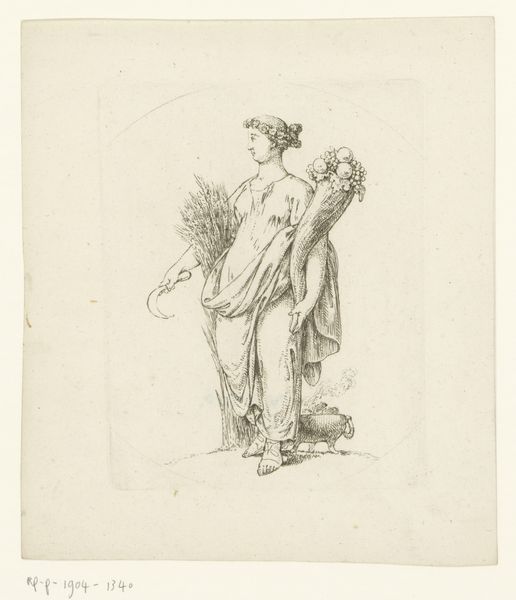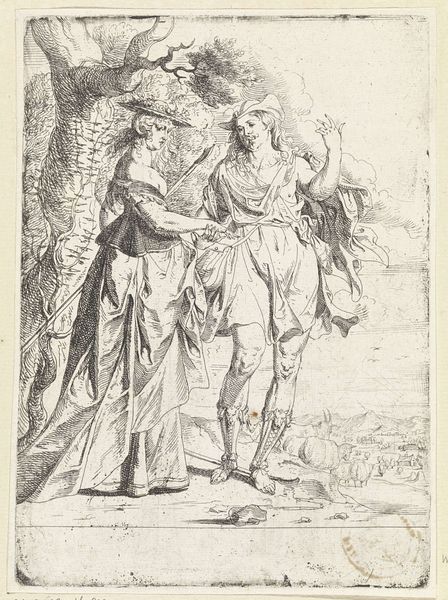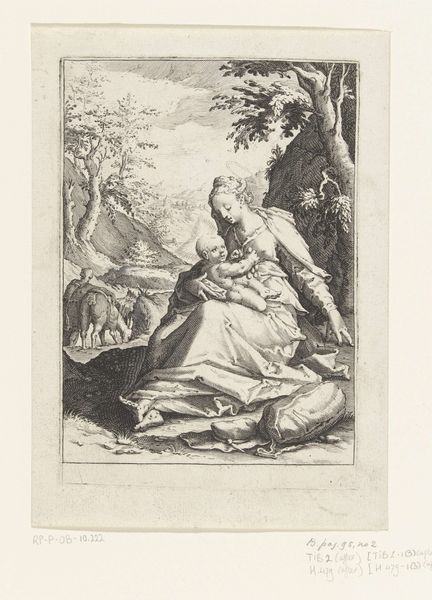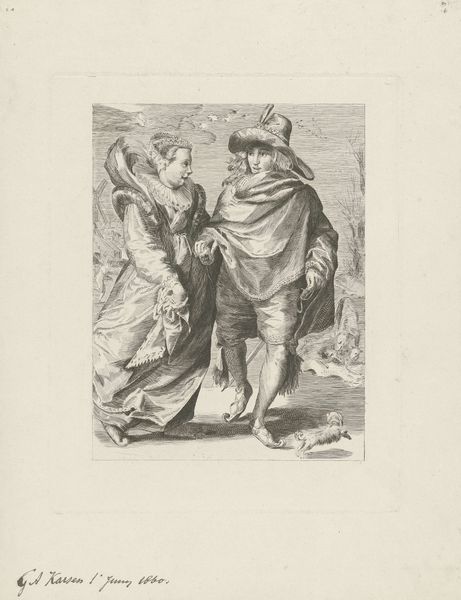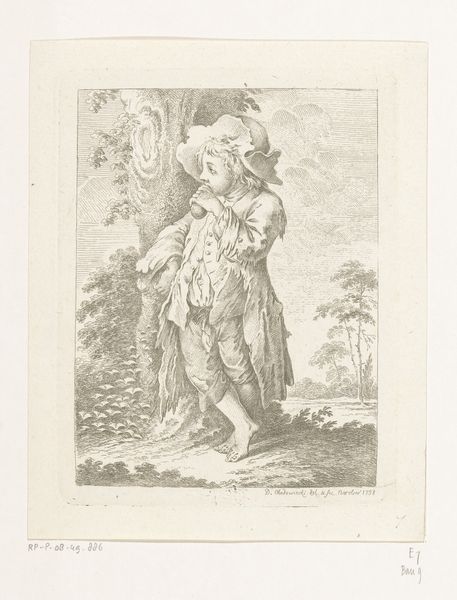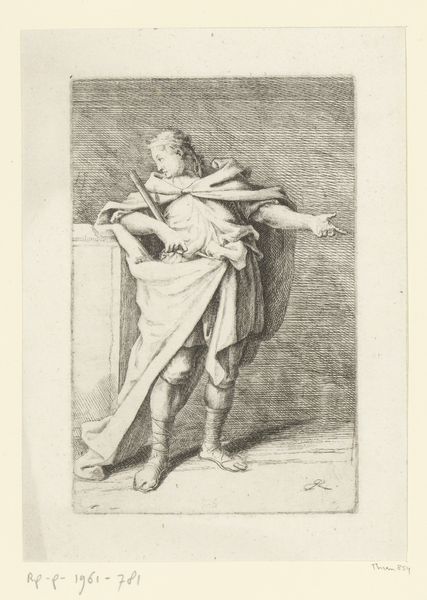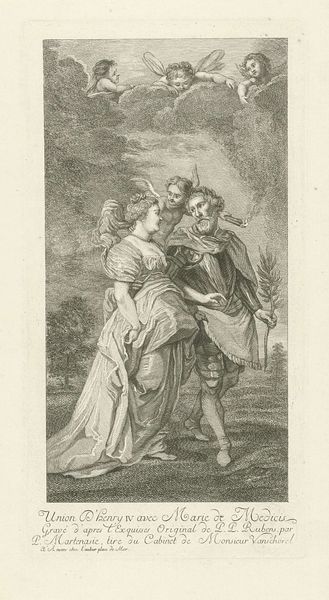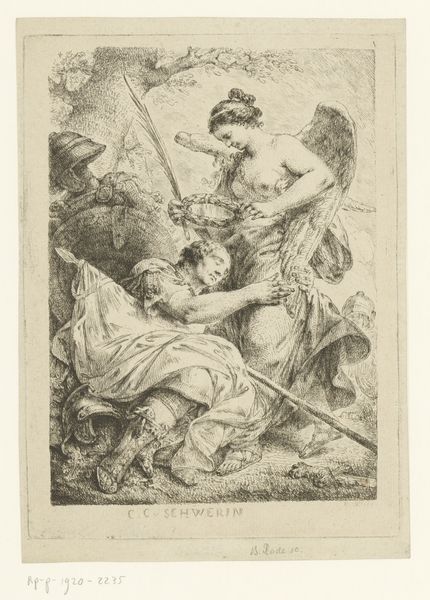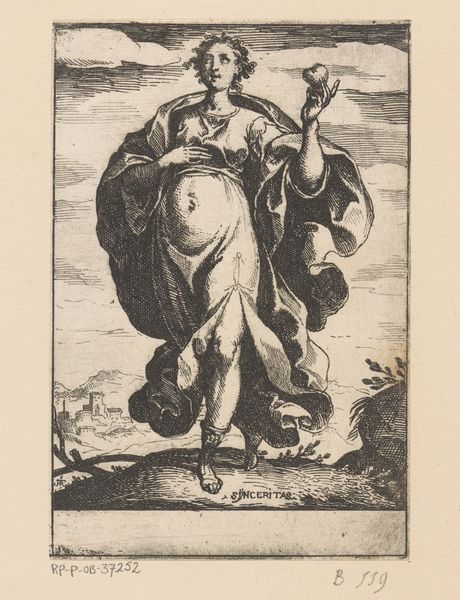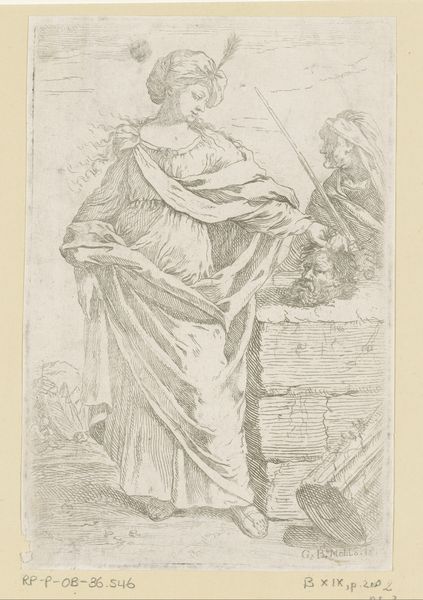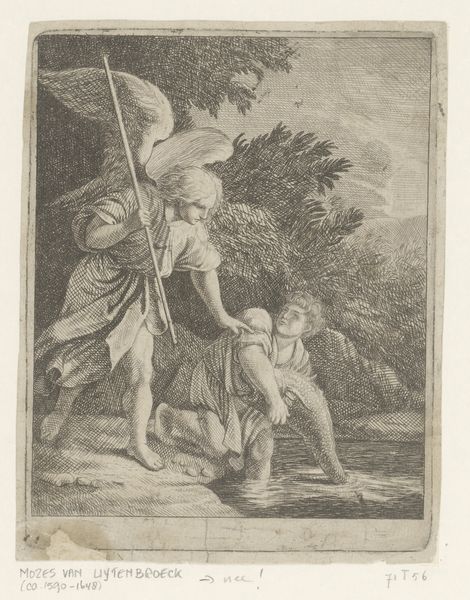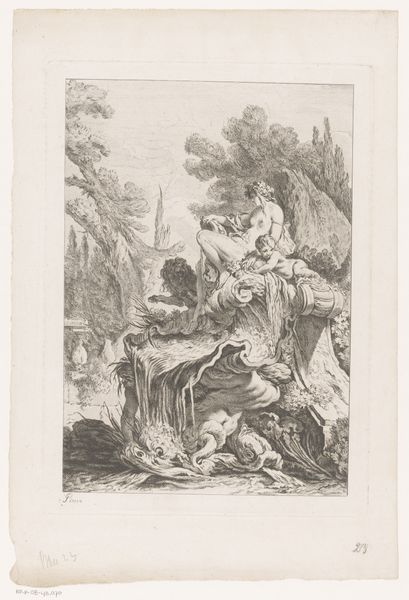
print, engraving
#
baroque
# print
#
old engraving style
#
landscape
#
figuration
#
history-painting
#
engraving
Dimensions: height 182 mm, width 120 mm
Copyright: Rijks Museum: Open Domain
Curator: The somber figure captured in this engraving has me immediately thinking about the transient nature of power and the ever-looming weight of history. Editor: I find this work, created by Johann Elias Ridinger around 1728, endlessly fascinating; its title is translated as "Warrior with Lance Leaning Against a Rock." Curator: Ah, yes, the warrior, presented here as anything but triumphant. There's a profound melancholy in his posture. The lance seems less a weapon and more a crutch. The engraving, with its stark lines, lends an air of vulnerability, wouldn’t you agree? Editor: Absolutely. Notice how Ridinger situates him not as a conqueror, but embedded within a larger landscape. It places the warrior within a specific context—he is a single figure amidst a greater environment. What do you make of the backdrop and the rocky terrain? Curator: For me, those landscape elements speak to a kind of personal wilderness—a terrain not just geographical but psychological, as if reflecting his inner state of reflection or weariness after battle. The landscape mirroring internal turmoil is a potent symbol of man's relationship to his world. Editor: And what does that relationship say to us about warfare during this era? Consider the cultural moment of its creation—early 18th century. This image departs from depictions of glorified battles and undefeated heroes and gestures toward war's tolls. The imagery becomes a silent indictment, reflecting a changing societal attitude towards the human costs of conflict. Curator: It's compelling to think about. Maybe the lance isn't just for battle, but also an ancient symbol of authority, passed down through generations. The way he leans on it might symbolize a turning away from those conventional representations of leadership, embracing something more human. Editor: Exactly. So, looking closely, one notices those bare feet. Even that simple gesture undermines traditional images of invincibility associated with warriors, and offers something radically different: humanizing power as flawed and earthbound. What a subversive message embedded in such a classic medium! Curator: Seeing it through your lens is transformative. The cultural memory held within symbols isn’t stagnant—they're constantly shifting meanings across time, making this image profoundly relevant, even now. Editor: Indeed, these kinds of artistic reflections serve as stark reminders of the continuous negotiations between power, representation, and lived experience, resonating deeply throughout history.
Comments
No comments
Be the first to comment and join the conversation on the ultimate creative platform.
